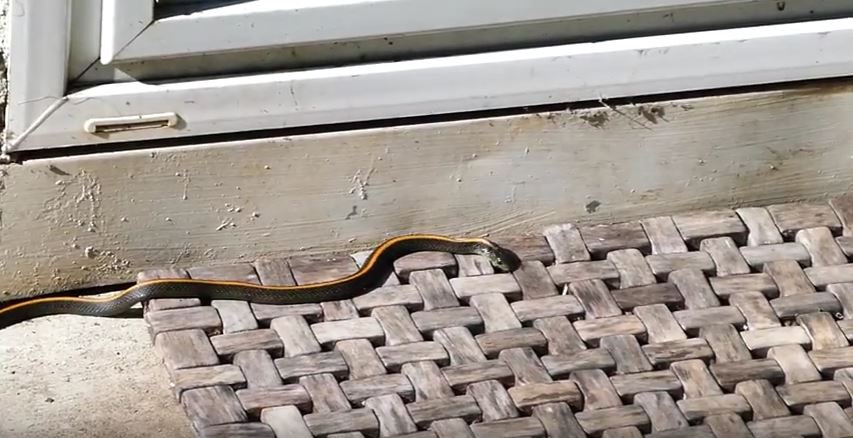The Garter Snake: appearance, biology, life cycle, habitat, diet, behavior

The garter snake is among the most common snakes. It can be kept as a pet and it is relatively harmless. Some species have mild neurotoxic venom, but it is not dangerous to humans.
Appearance: Garter snakes are found in different colors, depending on the species; however, the most common characteristic is three longitudinal stripes. One is found at the center while the other two are found on the lower part of the body. The stripes may be greenish or yellowish, and they will differ according to region or species.
Habitat: The garter snake is a generalist and it lives in different places. It can live in grassy knolls, meadows and woodlands or other places near the water and in arid parts.
Behavior: A garter snake is normally active in the day. It is fast moving and highly terrestrial; however, it may climb vines or shrubs. There are some species that climb better compared to others. If it is threatened, the garter snake may give off a bad smelling musk.
Diet: A garter snake eats mostly earthworms, amphibians and fish, and it may also eat other prey on occasion. They immobilize their prey using their sharp teeth and quick reflexes. Some types of garter snakes have saliva with low level neurotoxins that will cause paralysis so that their prey can be swallowed easily. The snake will swallow its prey whole.
Bite: Some species of garter snake are known to be harmless, but their bites may lead to minor swelling and itching in humans, and the bite of a garter snake has to be cleaned completely. Some people may be allergic to its saliva, but this is rare.
Reproduction: The garter snakes mate after hibernation and they will congregate again before the fall. Since they are already together for hibernation, they will not waste time or energy looking for mates. In the places where hibernation is not necessary, then the snake may rely on pheromones to find a mate. Garter snakes are known to be ovoviviparous, which means that they give birth to small snakes.
Go back to the How to Get Rid of Snakes page or email us if you have any other questions about The Garter Snake: appearance, biology, life cycle, habitat, diet, behavior
About Us
We are the Pest Education Network, a non-profit organization that focuses on wildlife and pest removal education. Our approach utilizes Integrated Pest Management, a strategy advocating prevention and humane methods.


